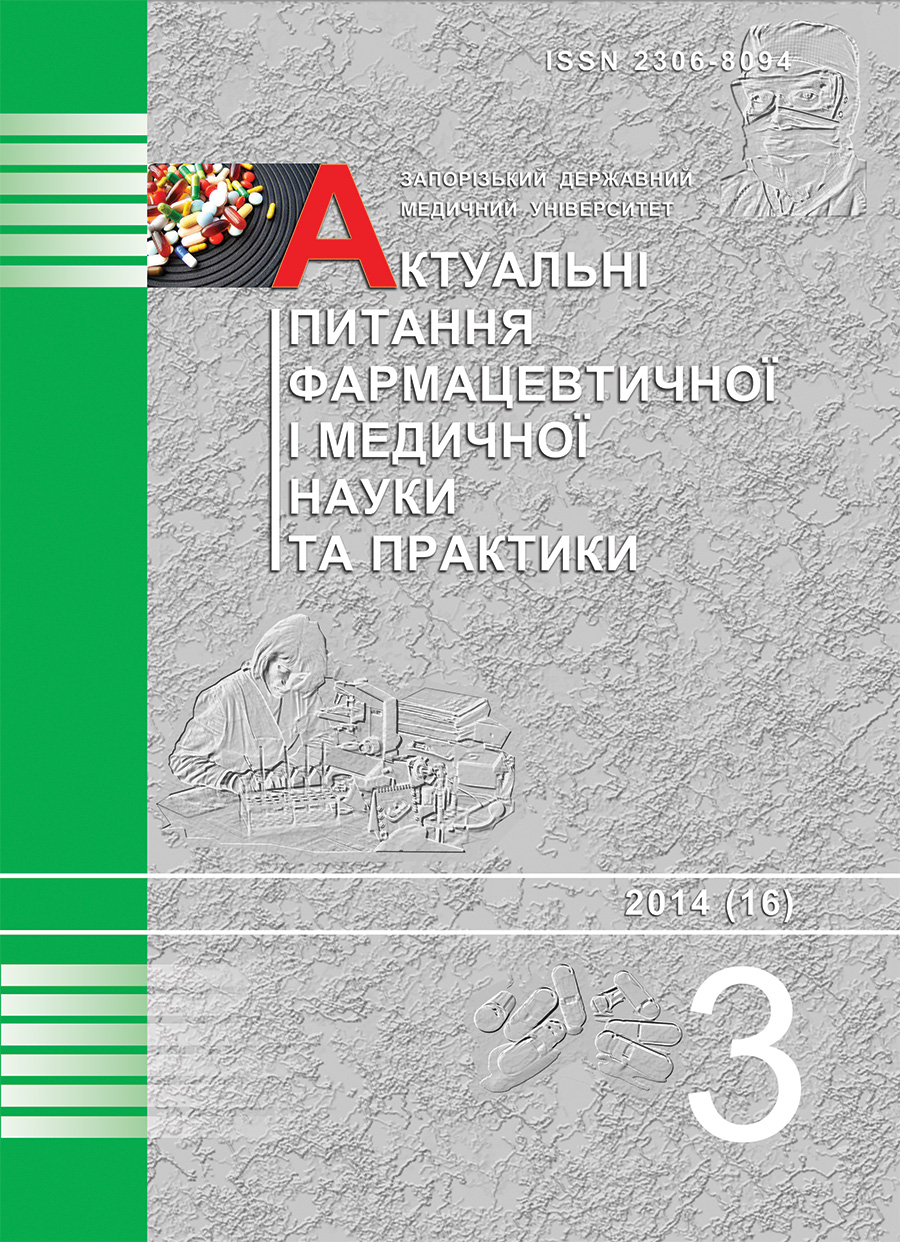The study of the elemental composition of peppermint (Mentha piperita)
DOI:
https://doi.org/10.14739/2409-2932.2014.3.33165Keywords:
Mentha Piperita, Plant Leaves, Trace ElementsAbstract
Introduction
Our attention was drawn by quite widespread plant, namely peppermint (Mentha piperita) of mint family (Lamiaceae L.). It isn’t known as a wild-growing plant, this plant is the hybrid received from crossing water mint (Mentha aquatica) with a spicate mint (Mentha spicata) or green mint (Mentha viridis). Therapeutic action of plant is caused by the BAS complex, among which essential oil, alkaloids, saponins, organic acids, vitamins, macro - and microelements are. Accumulation of elements in a plant directly depends on sort and species of this plant, climatic conditions and geographical places of growth. Thus, using pharmacognosic research of peppermint, it would be expedient to carry out the comparative analysis of the elements content in leaf of widespread species of this plant, and also to compare to element structure of peppermint from other region of preparation.
Studying qualitative structure and quantitative content of macro - and microelements in leaf of 3 samples of peppermint became the purpose of our research.
Materials and methods of research
The peppermint leaves of 3 samples were the object of our research. They are ‘Chornolistaya’ sort – the sample #1, ‘Zgadka’ sort – the sample #2 (the stocking up place is Dnepropetrovsk region, 2013) and peppermint - the sample #3 (the stocking place is Lebanon, Baalbek surroundings, 2013).
In order to study elemental structure of peppermint leaves, atomic emission spectrometry with photographic registration was used.
Results and discussions
All types of raw materials had identical element structure. According to the content in each type of raw materials, compositions can be divided into some groups: the first one – the content of element was near or above 1000 mg /100 g, the content was higher than 100 mg /100 g, the content of composition was lower than 100 mg /100 g and below than 1 mg /100 g. Thus, the ambit between these groups was deeply emphasized. The following regularity of the elemental content in raw materials was observed: sample #1 K>Ca, Si>Mg>Na>P, Al, sample #2 K>Ca, Si>Mg>Na>P, Fe, Fe, sample #3 K>Ca>Mg>P. The content of such elements as Mo, Co, Pb was lower than 0,03 mg /100 g, As, Cd, Hg - below than 0,01 mg /100 g. The highest content in all types of raw materials was defined for potassium. The highest content of potassium, calcium and magnesium was established in a sample #3. The content of potassium in this type of raw materials was 4350 mg /100 g that was higher almost by 1,9 times in comparison with a sample #2, by 1,4 times with a sample #1. Also in a sample #3 there was the highest content of calcium (1370 mg / 100 g) that was more than twice of the elemental content in a sample #2 and by 1,6 times higher than in a sample #1. In a sample #3 the content of magnesium made up 800 mg /100 g that was by 1,5 times higher than the content of magnesium in a sample #2 and was insignificantly higher (by 1,1 times) than the content in a sample #1.
Conclusions
- Using atomic emission spectrometry qualitative structure and quantitative content of the elements in 3 samples of peppermint leaves have been determined.
- In all studied objects the equal elemental content has been determined. Every object had not less than 5 macro-, 15 micro-, 4 ultramicroelements, the content of the last ones was lower than 0,03mg /100 g.
- The highest content of potassium has been determined in all types of raw materials (not less than 2300 mg/kg). It could be connected with certain aspects of preparation action made of peppermint.
References
(2009) Derzhavna farmakopeya Ukrainy. Dopovnennia 3, 198-199. [in Ukrainian].
Travnyk. Likarski roslyny. Retrieved from http://dna.com.ua/4375-myata-perceva.html.
Riachi, L. G., Abi-Zaid, I. E., Moreira, R. F., & De Maria, C. A. (2012). Volatile composition of peppermint (Mentha piperita L.) commercial teas through solid phase extraction. Arch Latinoam Nutr, 62(4), 389–92.
Caboni, P., Saba, M., Tocco, G., Casu, L, Murgia, A., Maxia, A., et al. (2013) Nematicidal activity of mint aqueous extracts against the root-knot nematode Meloidogyne incognita. Agric Food Chem., 61(41), 9784–9788. doi: 10.1021/jf403684h.
Bouari, C., Bolfa P., Borza, G., Nadas, G., Catoi, C., & Fit, N. (2013). Antimicrobial activity of Mentha piperita and Saturenja hortensis in a murine model of cutaneous protothecosis. Mycol Med., 1156–5233.
Herro, E., & Jacob, S. (2010). Mentha piperita (peppermint). Dermatitis, 21(6), 327–329.
Khater, H. F. (2014). Bioactivities of some essential oils against the camel nasal botfly, Cephalopina titillator. Parasitol Res, 113(2), 593–605. doi: 10.1007/s00436-013-3688-5.
Berdowska, I., Zieliński, B., Fecka, I., Kulbacka, J., Saczko, J., & Gamian, A. (2013). Cytotoxic impact of phenolics from Lamiaceae species on human breast cancer cells. Food Chem. 141(2). 1313–21. doi: 10.1016/j.foodchem.2013.03.090.
Burda, N. Ye., Zhuravel, I. О., Kyslychenko, V. S., Demiokhin, V. B. (2010). Elementnyi sklad travy i koreniv gadiuchnyka v’iazolistogo. Zbirnyk naukovykh prats spivrobitnykiv NMАPO іmeni P.L. Shupika, 19(3), 586–589. [in Ukrainian].
Downloads
How to Cite
Issue
Section
License
Authors who publish with this journal retain copyright and grant the journal right of first publication with the work simultaneously licensed under a Creative Commons Attribution License that allows others to share the work with an acknowledgement of the work's authorship and initial publication in this journal.


